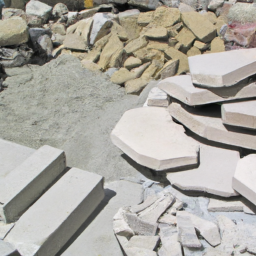How To Lay Rocks Landscaping Tips
Table of Contents []
- How To Lay Landscaping Rocks
- Overview
- Essential Supplies
- Choosing Rocks for Your Landscape
- Layout
- Installation Process
- Finish the Job
- Maintenance and Upkeep
- Cleanup and Recycling
- Closing Remarks
How To Lay Landscaping Rocks
A Comprehensive Guide to Laying Landscaping Rocks
Overview
Landscape rocks are an attractive and versatile addition to any backyard. Installing your own rocks may seem daunting but, with the right planning, knowledge, and tools, you can create an eye-catching design you'll be proud of for years to come. In this guide, we'll dive deep into the specifics of landscaping with rocks and break them down into 8 key themes that you should consider before getting started.
Essential Supplies
Before you can get started, you need to plan ahead and make sure you have all of the supplies you need. Basic supplies include the rocks of your choosing, gravel, sand, gloves, a shovel, wheelbarrow, measuring tape, weed cloth, and landscaper's fabric. More advanced supplies include a wheelbarrow, rake, tamping tools, and a tamper.
Choosing Rocks for Your Landscape
When selecting rock for your landscape, it's important to choose a size and shape that will work well and look great. Make sure to measure and consider any slopes, curves, corners, and any other planned features or focal points in the landscaping. Consider the colors and natural tone of the rocks to ensure that they will complement your existing aesthetic.
Types of Landscaping Rocks
There are many types of landscaping rocks to choose from. Here are a few of the popular varieties:
- Large Natural Boulders These rocks are great for creating natural borders and retaining walls that blend in with nature curiously well.
- Cobbles These rocks are great to use as a base for patios and walkways. They can also be used to create a textured mulch or gravel bed.
- Decorative Rock This type of rock is perfect for adding character to flower beds or edging. Decorative rock is also great for water features.
- Pea Gravel These small, rounded rocks are perfect for pathways and a great accent.
Layout
Creating the layout for your landscaping project includes picking a location and a configuration. Make sure to consider the existing conditions of the area like access to water and drainage. You also need to decide where the rocks will be placed. If possible, try to create a contour of your area to get an idea of the final design.
Design Considerations
When planning the layout of the landscaping project, there are some key design considerations to bear in mind. Think about the overall purpose and magnitude of the project and plan accordingly. Budget also plays an important role in the decision-making process when choosing materials and supplies.
Installation Process
Once you have determined the layout of the project, you can begin the installation process. Start by forming a base layer of gravel, sand, or soil. The base layer should be approximately 4-6 inches thick in order to provide adequate support. Once the base layer is completed, lay the landscaping fabric over it. This will help to minimize the growth of weeds and help to maintain the integrity of the base.
Adding Rocks
After the base layer and fabric are in place, you can start laying out your chosen rocks. Place the rocks in the desired location and use the shovel to press them into the ground. This will help the rocks to stay in place. If you have chosen larger rocks, you may need to use a wheelbarrow to get them to the desired location.
Finish the Job
Once the rocks are in place, there is some additional work to be done. Depending on the layout and look you are going for, you can use different materials to cover any gaps, fill in crevices, or even add extra layers of rock. You may also need to use a tamper to ensure the rocks are properly secured in the ground. Once all the finessing is finished, you can add a top layer of mulch or gravel, and you will have a beautiful, finished landscape of rocks.
Maintenance and Upkeep
After the rocks have been installed, it is important to maintain and properly care for your landscape. Rocks can settle over time, which can cause gaps and erosion. Make sure to fill any gaps or shifts in the rocks periodically. It is also important to inspect the rocks for signs of damage such as chips and cracks.
Cleanup and Recycling
Once you have finished installing the rocks, it is important to properly clean up the area. This includes disposing of any weeds, roots, or debris that may have been uncovered during the process. It is also important to recycle any unused materials. Many recycled materials can be used in other landscaping projects.
Closing Remarks
As you can see, there is a lot that goes into laying landscaping rocks. It is important to take your time and plan out every step of the process. From choosing the right rocks to maintenance and recycling, having a solid understanding of the process will ensure that you complete your project correctly and effectively. With just a little bit of time and effort, you can create a beautiful and unique landscape that you can enjoy for years to come.

Previous Page
Next Page
